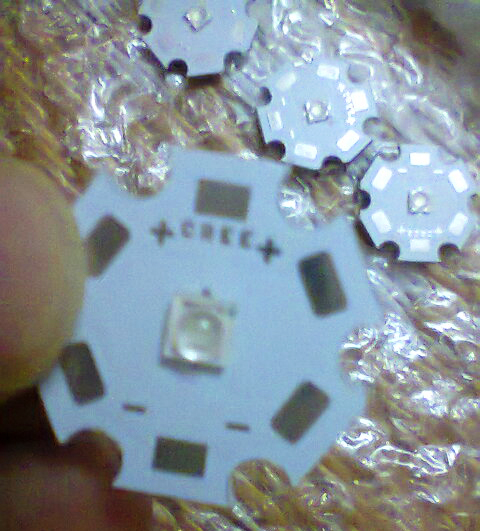Re: A new source
At exactly 490 nanometers, the color is right on the edge between blue and green. For any other color LED the wavelength could be plus or minus 15 nanometers and it wouldn't matter that much, but at 490 nanometers there is a sudden cut off. Anything below 490 is blue (a sky blue tint) and above 490 the color has is a very greenish-cyan tint. For this reason, I feel that "true cyan" is a very elusive color. To make matters more complicated, LEDs give off a more trailing amount of longer wavelengths from their peak wavelength than they do of shorter wavelengths. It is commonly said that color LEDs only give off a single wavelength, but this is not entirely true. The wavelength emission from an LED is very narrow, but it is not truly a single wavelength value. So even if an LED had a peak wavelength emission of 490 nanometers, chances are the color is going to be more green-tinted than 490 nanometers.
If you want to get an idea of what 490 nanometers actually looks like, look at the faint blue-green terbium spectral line from a fluorescent lamp. Either use a prism or a diffraction grating and hold it up to the light. You can also use an ordinary CD, just stare into the reflection at the right angle. You will notice that even the spectral phosphor line is not entirely a single discrete wavelength (though it is very narrow). On one edge of the line a faint light blue turquoise will seem to predominate, while on the other side it looks more greenish cyan. This spectral line is right on the border between blue and green.
If you ever get the opportunity, look at the 488 nanometer line from an argon laser. It is a sky blue color, with just a little cyan hint, but definitely and distinctively blue.
You can find cyan bin LEDs being sold on ebay, marked as 490 nm, but many people who buy them will be disappointed. They're not truly a real cyan color, not quite. Although I suppose the definition of "real cyan" can be a little subjective. I mean they're definitely not on the bluish-side of cyan. I suspect these LEDs may actually be putting out an emission closer in the territory of 490-495 nm.
To make matters more confusing, 505 nanometer "traffic signal" LEDs are commonly called "cyan" although they certainly aren't. They are, however, more cyan than 520 nm, which is a forest green color. I suppose it's all relative, to some degree.






